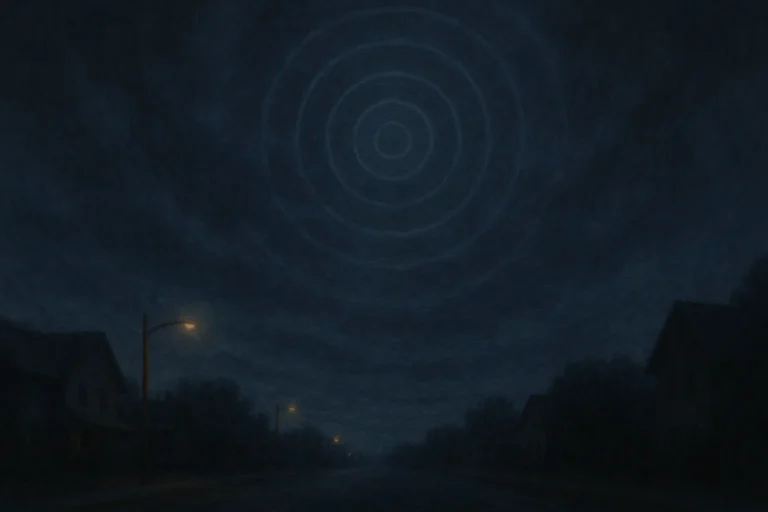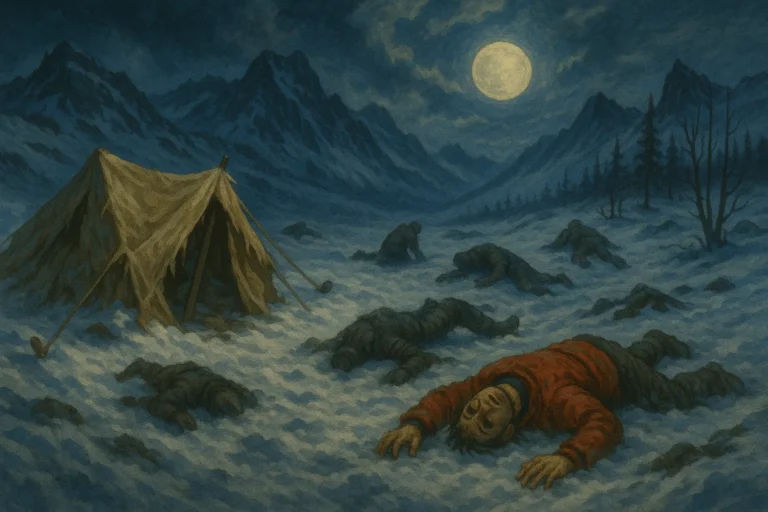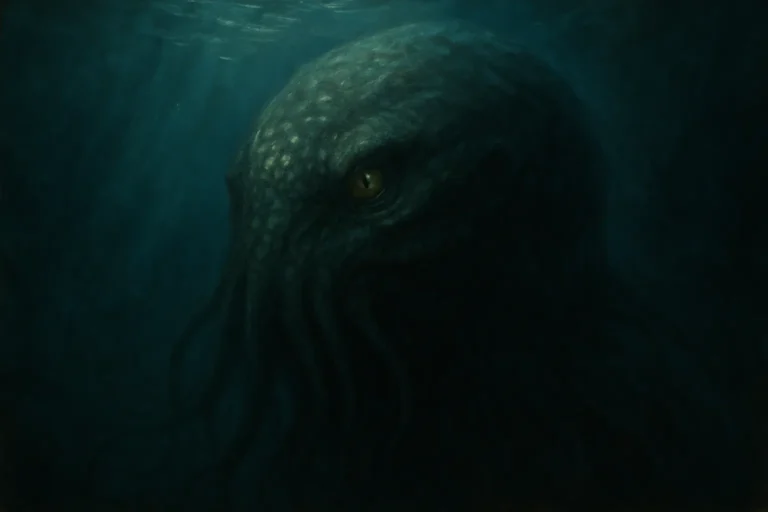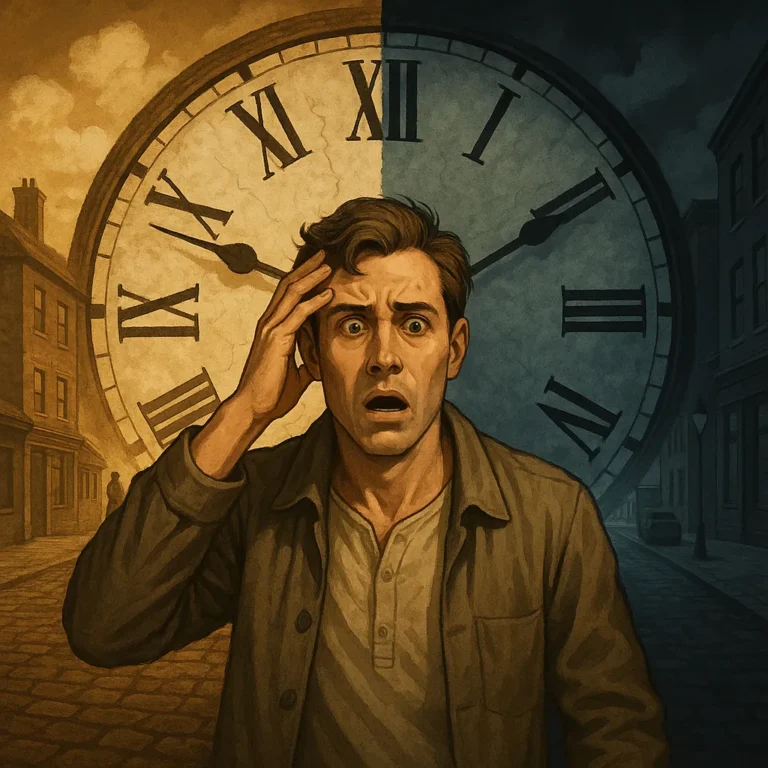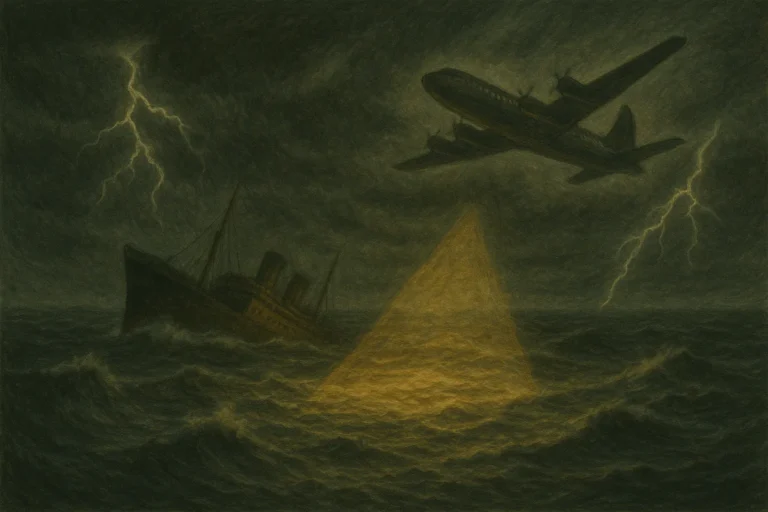The Green Children of Woolpit: A Medieval Mystery with Alien Hints
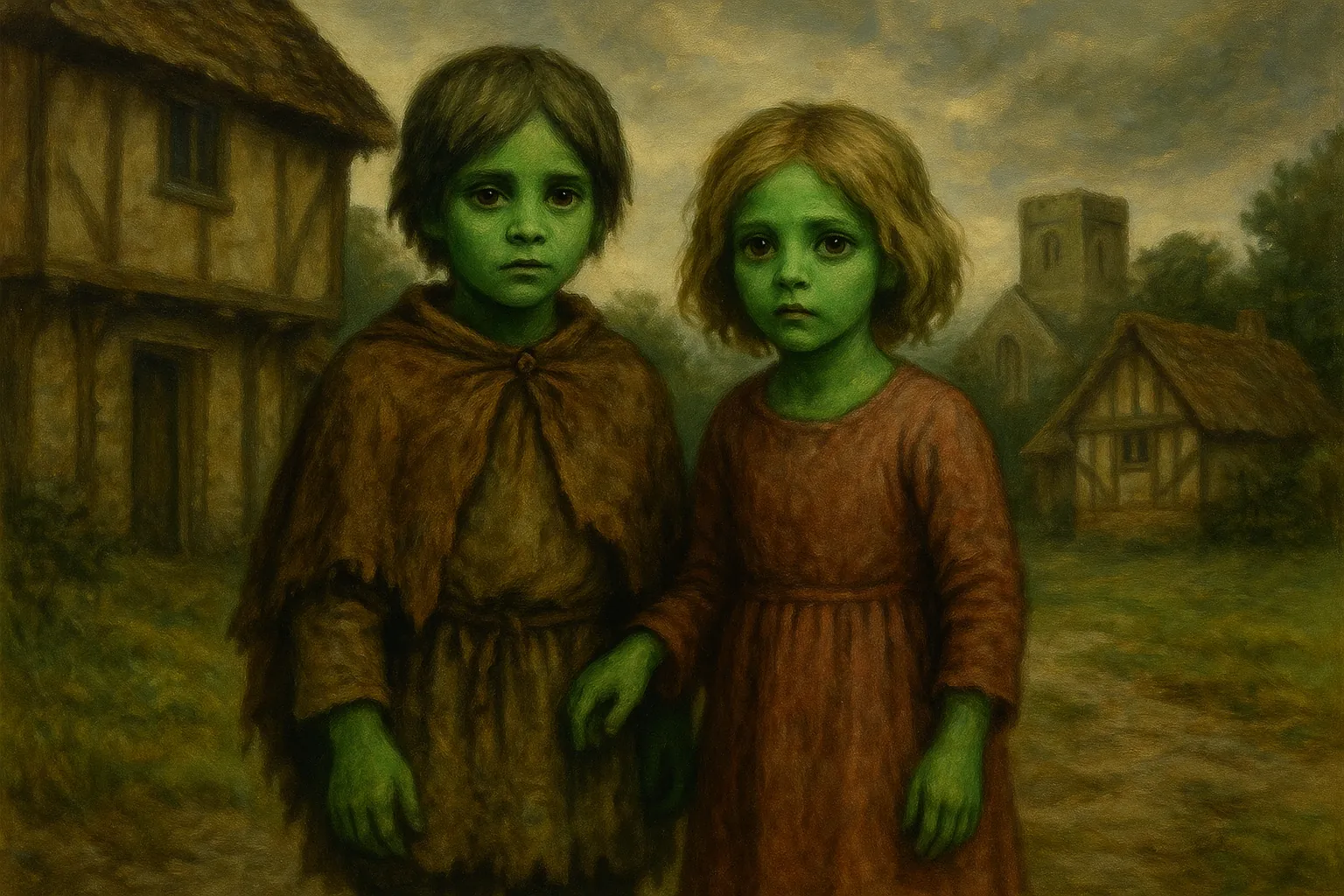
It was sometime during the 12th century when villagers in Woolpit, Suffolk — a quiet, agricultural spot in eastern England — stumbled upon something completely out of the ordinary. Near the edge of town, close to one of the deep pits dug to trap wolves (hence the name “Woolpit”), two children were discovered. A boy and a girl. Frightened, confused… and unmistakably green.
Yes, green.
The children’s skin had a distinct greenish tint. They spoke no known language and wore clothes that were unfamiliar in style and fabric. At first, they wouldn’t eat anything the locals offered. But eventually, they accepted raw beans — and as the days passed, their health improved. The boy grew sick and died not long after. The girl survived, grew up, and learned to speak English. And the story she told only deepened the mystery.
🌿 Strangers in the Field
Historical accounts of the green children come from two primary sources: William of Newburgh, a 12th-century historian, and Ralph of Coggeshall, a chronicler and monk. Though their writings differ slightly in detail, the central story remains the same: two green-skinned children appeared seemingly from nowhere and spoke a language no one could understand.
They were taken in by Sir Richard de Calne, a local landowner, who tried to care for them. Over time, their skin color began to fade to a more normal tone, suggesting the green hue wasn’t permanent — perhaps related to diet, illness, or something else entirely.
When the girl finally learned enough English to speak about where she came from, she said she and her brother were from a place called “St. Martin’s Land,” where everything was dim, and the sun never shone. The people there were all green like them. She said they had been tending their father’s livestock when they heard a loud noise and suddenly found themselves in Woolpit — as if transported.
Was this just the imagination of a confused child? Or something far more unusual?
👽 Theories That Bridge Worlds
Over the centuries, the tale of the green children has sparked countless theories — from the grounded to the fantastical.
One of the more practical explanations suggests the children may have been Flemish immigrants fleeing war. There was conflict in nearby regions around that time, and it’s possible they were orphaned, confused, and traumatized. Their strange clothing and language could have simply been foreign. As for their green skin, some historians believe it might have been a symptom of malnutrition — specifically, a type of anemia known as “green sickness.”
But that doesn’t explain everything.
The girl’s story of “St. Martin’s Land,” with its perpetual twilight and glowing atmosphere, sounds like nothing found in medieval England. In more recent years, this has led to theories that border on the paranormal — or even extraterrestrial.
Some have speculated that the children were interdimensional beings, accidentally slipping into our world through a kind of portal. Others go a step further, suggesting they might have been aliens — either intentionally sent to Earth or stranded by accident. The idea of a “green” alien species resonates with our modern pop culture imagery, but what’s eerie is how old this story is — predating UFO lore by centuries.
Could this be one of the earliest accounts of an alien encounter in human history?
🧝 Faerie Folk or Folklore?
Before “aliens” were part of the cultural lexicon, strange visitors from other realms were often explained through the lens of folklore. And that’s another possible layer to the Woolpit story.
The green children’s appearance, behavior, and the place they claimed to come from all bear a resemblance to legends of the fae — the fair folk, or otherworldly beings said to live in hidden realms parallel to our own. In many European folktales, faerie creatures were thought to appear suddenly, vanish without a trace, or kidnap humans. Their realms were described as glowing, timeless places where the sun never shone quite right.
Some have suggested that the children came from one of these mystical lands — or were sent back from it, perhaps by accident or as a warning.
It’s also possible that the tale evolved into a faerie legend over time. In medieval societies, stories were often passed on orally before being written down, and they tended to absorb the beliefs and superstitions of the era. Could a real encounter with two strange children have transformed into a myth over generations?
📚 Documented — But Not Explained
Unlike many strange tales that come to us as rumors or secondhand stories, the case of the green children was documented relatively close to when it allegedly occurred. William of Newburgh wrote his version just a few decades after the incident, and Ralph of Coggeshall was a contemporary with access to eyewitnesses.
This makes the mystery more grounded than most legends — though still far from proven.
Even today, no one knows what really happened in Woolpit. Did two foreign children wander into a village, sick and lost, only to be reimagined as visitors from another world? Or did something truly extraordinary occur — something that we still can’t explain with logic or science?
The story has inspired novels, children’s books, and even UFO documentaries. It continues to captivate because it doesn’t offer closure. It teases the possibility that the world — and perhaps other worlds — is far stranger than we think.
🕯️ A Light in the Gloom
The tale of the Green Children of Woolpit is one of those rare stories that lingers in the imagination. It’s eerie, sad, and strangely hopeful. It speaks of mystery, survival, and the unknown edges of reality. And it reminds us that sometimes the strangest stories don’t come from modern headlines or new technologies — they come from long ago, carried in parchment and whispered through time.
Whether visitors from a hidden land, victims of tragedy, or something else entirely, the green children left behind a mystery that still flickers in the dark corners of English folklore.
And maybe, just maybe, the truth is still out there — waiting beneath the soil of Suffolk, or in the fading gap between our world and something… else.

